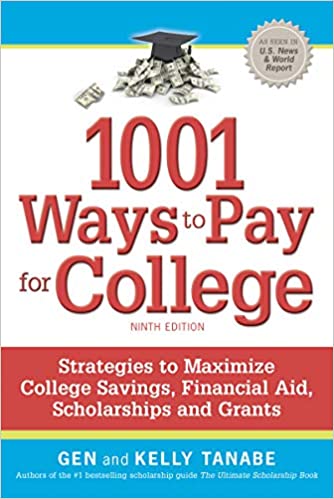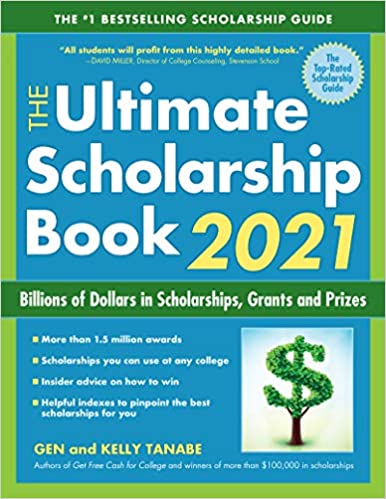Financial aid can seem like a big, scary mystery. We've actually met people who had nightmares about it! One student's surreal experience involved a despotic financial aid officer sitting on top of an 800-foot high pile of cash. Below, a line of weary parents waited their turn. A lucky few received a small handful of dollars. But most got nothing and walked away with bowed heads. Fortunately, this was just a bad dream. Reality is far less dark and mysterious. Financial aid officers are not your arch enemies but your allies in helping you pay for college.
The financial aid system has evolved over many decades and is based on a set of well-established rules. If you understand these rules, you will not only feel more in control of the process but you will also insure that you receive the greatest amount of financial aid that you deserve.
This guide is designed to give you an overview of how financial aid works and to present the steps you can take to get your fair share. However, it is not a comprehensive guide, and for that we recommend picking up a good book such as 1001 Ways to Pay for College.
1
Know the golden rule of financial aid.
Before we get into the details of getting financial aid, you need to understand one important philosophical principle: College education is not an entitlement. In other words, unlike a high school education, the government does not guarantee anyone the right to an affordable college education. The government does believe that it is in the best interest of society to make college as accessible as possible. So it provides aid—but only after you have exhausted nearly all of your own resources. Financial aid is not designed to help you spend less money on college, but rather to help you afford to go to a college that you might not have been able to pay for on your own. You also have to keep in mind that since a college education is not an entitlement, there is no guarantee that even if you meet every qualification, the government or college will automatically come to your aid.
In practical terms, this means that while you should apply for financial aid, you should not view it as a sure thing that will take care of the bills you can't afford to pay. Think of yourself as a mountain climber who has a 90-foot rope. If you want to scale a 110-foot cliff, then financial aid might give you that extra 20 feet of rope to do so. But if you want to climb a 150-foot cliff, you will find that even with the extra 20 feet of rope from financial aid, you still need to bring more of your own rope. Another option is to consider climbing a lower cliff (e.g. a less expensive school).
2
Know what forms you need to complete and why.
Public and private colleges have adopted different formulas and procedures for determining how much money your family can afford to pay for college. Public schools (and some private ones) use what is known as Federal Methodology. This is the formula provided by the U.S. Department of Education to calculate expected family income as it relates to student financial aid.
To apply for federal aid, you need to complete a form called the Free Application for Federal Student Aid, commonly referred to by its acronym: FAFSA. Using the information you provide on the FAFSA, the government calculates how much money you can afford to pay for one year of college. The Federal Methodology formula includes things like your income and assets but does not consider assets such as retirement accounts and equity that you have built up in your home.
Some private colleges want to know about your retirement accounts and home equity and will use Institutional Methodology. By completing the College Board's PROFILE form in addition to the FAFSA, you would provide this additional information to the colleges that require it. While Institutional Methodology is somewhat stricter than Federal Methodology and will usually result in calculations that show less financial need, you really don't have a choice in the matter since you need to submit the financial aid applications the colleges require.
Regardless of the forms you complete, the goal of all financial aid calculations is to come up with a single number. This number is known as your Expected Family Contribution (EFC). It represents the amount of money that your family is expected to contribute for one year of your education. This number can range from $0 to infinity.
3
Understand how your Expected Family Contribution is determined.
At this point, you are probably wondering how in the heck the government uses a snapshot of your family's finances to determine how much you can spend on college. Like everything from taxes to Social Security benefits, the government uses a formula to calculate your Expected Family Contribution. Here is the general formula, (which can change from year to year), that is used for computing your EFC:
Parents' adjusted income x (up to 47 percent) +
Parents' assets x (up to 5.65 percent) +
Student's income x (up to 50 percent) +
Student's assets x (20 percent) = Expected Family Contribution
There are some factors that add a modicum of flexibility to the calculations, including family size and the number of children in college. These indicators are used to adjust the exact percentage assessed against your income and assets. Also, there are income and asset protection figures that prevent the government from tapping everything that you have.
If you want a really detailed calculation to forecast your Expected Family Contribution, then we recommend using an online EFC calculator. One good calculator can be found at this URL address: http://www.collegeanswer.com/paying/est_efc/efc_index.jsp. You can play with it and try different numbers to simulate various changes in your finances. If you want to do the calculations yourself on paper, you can download an EFC worksheet at https://fsapartners.ed.gov/. Look under the heading "Knowledge Center," and click on "FSA Handbook."



